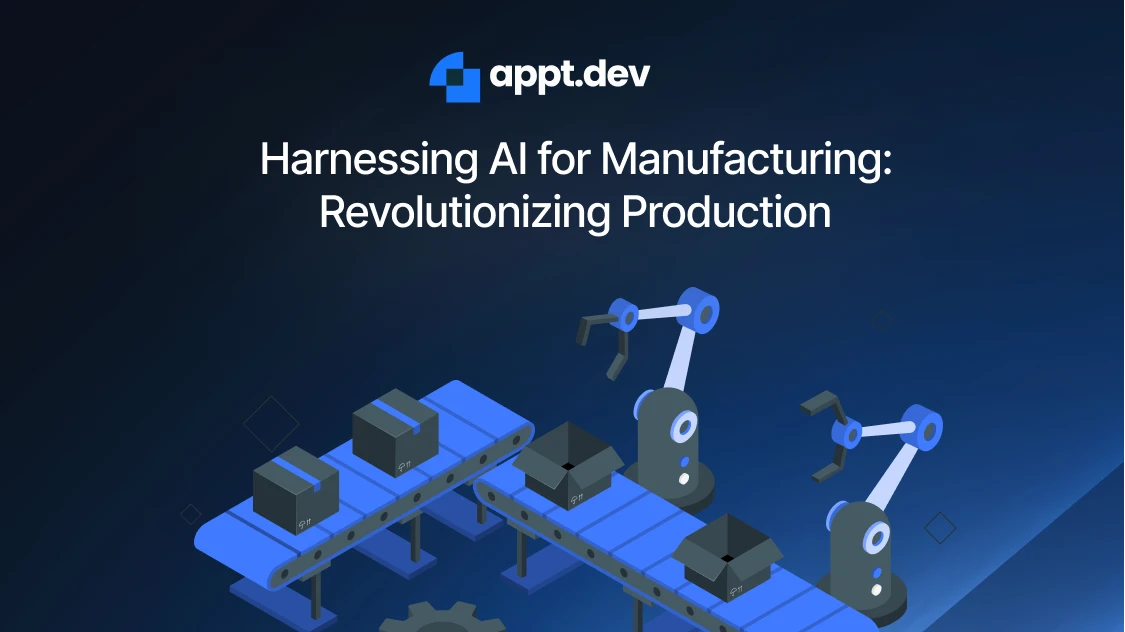What is Citizen Development?

Shaik Moosa
November 29, 2024 | 5 min
Share to
Defining Citizen Development
Citizen development refers to the process of empowering employees—known as citizen developers—to build and deploy applications using low-code or no-code platforms. These individuals are not professional developers but are equipped with tools that simplify complex coding into user-friendly interfaces. By enabling employees from diverse departments such as HR, marketing, or operations to take an active role in application development, organizations can achieve faster delivery, improved workflows, and innovative solutions.
Key Features of Citizen Development
- Bridging the IT Gap Traditional IT departments often face overwhelming demand, resulting in bottlenecks. Citizen development distributes the workload, freeing IT to focus on more complex projects.
- Cost Efficiency Organizations save significant costs by leveraging citizen developers instead of hiring additional developers for every custom application need.
- Business Agility Teams can rapidly create, test, and iterate solutions, responding effectively to changing market dynamics.
- Innovation Across Teams Citizen development fosters creativity as employees from various domains bring unique perspectives to problem-solving.
- Employee Engagement
Empowering employees with the tools to create applications increases engagement and satisfaction as they see their ideas come to life.
The Role of Platforms like ApptDev in Citizen Development
Modern low-code platforms like ApptDev are at the heart of the citizen development movement. They provide a user-friendly interface, AI-powered tools, and pre-built components, enabling citizen developers to:
- Define: Establish the application's purpose and infrastructure.
- Develop: Use visual tools like the Schema Builder, UI designer, and flow designer to create custom workflows.
- Deploy: Seamlessly deploy applications in the cloud with one-click solutions. ApptDev also ensures IT governance, offering features like secure collaboration, access control, and real-time monitoring.
Challenges in Citizen Development
While citizen development offers immense potential, there are challenges to address:
- Governance and Security Without proper IT oversight, applications might not comply with organizational policies or security standards. Platforms like ApptDev help mitigate this with built-in governance tools.
- Quality Control Ensuring consistency in design and functionality across applications is essential for scalability.
- Skill Gap While low-code platforms simplify development, organizations must provide adequate training to citizen developers.
Why Citizen Development Matters Today
The rise of citizen development reflects the need for businesses to adapt quickly while staying innovative. At ApptDev, we’re proud to be a part of this movement. With our AI-powered low-code platform, we aim to enable citizen developers to build faster, smarter, and more agile applications, transforming businesses across industries.
Use Cases Across Industries
Citizen development’s adaptability has led to successful deployments across sectors, addressing unique challenges while aligning with organizational goals. Below are illustrative examples demonstrating its impact.
Energy Sector: Shell’s Decentralized Innovation
Shell’s "DIY" program empowered over 4,000 employees to build applications tailored to operational needs, from field data collection to supply chain optimization. Operating under a federated governance model, the initiative combined centralized oversight with distributed coaching, ensuring compliance without stifling creativity. This approach reduced IT backlog by 40% and accelerated project delivery cycles by 60%, according to internal metrics [1.] By equipping employees with platforms like Kissflow, Shell maintained rigorous security protocols while fostering a culture of grassroots innovation.
Financial Services: Generali Investments’ Automation Leap
Generali Investments implemented a citizen developer program to automate repetitive tasks such as report generation and data entry. Using UiPath’s StudioX platform, employees with minimal coding experience built workflows that reduced processing times by 70%. The program’s success hinged on three pillars:
- Structured Training: Quarterly workshops covered automation fundamentals and platform-specific skills.
- Community-Driven Support: A peer network facilitated knowledge sharing, resolving 85% of user queries without IT intervention.
- Governance Framework: The Center of Excellence (CoE) reviewed all automations for compliance, ensuring alignment with data privacy regulations. This initiative saved 12,000+ annual work hours and earned Generali a global innovation award in 2023.
Telecommunications: Globe Telecom’s Agile Response
Facing rapid market changes, Globe Telecom adopted a low-code strategy to bridge application gaps in customer service and network management. Marketing teams-built customer onboarding portals using OutSystems, reducing average service activation time from 48 hours to 15 minutes. Meanwhile, operations staff developed inventory tracking tools that decreased equipment misallocation by 30% [1]. The program’s governance model allowed departmental autonomy while mandating monthly IT audits, striking a balance between speed and security.
Logistics and Manufacturing: Wesco and GE’s Efficiency Gains
Wesco International’s citizen developers created a suite of warehouse automation tools using Appian, addressing challenges like inventory discrepancies and shipment delays. One application automated purchase order reconciliation, reducing errors by 45% and saving $2.1M annually in operational costs [1]. Similarly, GE Aviation employed Microsoft Power Apps to build predictive maintenance systems for jet engines. Mechanics input sensor data into citizen-built dashboards, enabling real-time anomaly detection that cut unplanned downtime by 25% [7]
Healthcare: HIPAA-Compliant Workflow Solutions
While not explicitly detailed in provided sources, platforms like ApptDev demonstrate citizen development’s healthcare potential. Nursing staff at a midwestern U.S. hospital used ApptDev’s HIPAA-ready templates to create a patient handoff system. The app integrated with EHR systems via pre-built connectors, standardizing shift transitions and reducing miscommunication incidents by 60% [7]. Such implementations highlight how governance-focused LCNC tools enable compliance-sensitive innovations.
Retail: Enhancing Customer Experiences
A European fashion retailer empowered store managers to build clienteling apps using Mendix. These tools consolidated customer purchase history and preference data, enabling personalized recommendations that boosted average transaction values by 18%https://quixy.com/blog/what-is-citizen-development-a-comprehensive-guide/. Meanwhile, supply chain teams developed demand forecasting models using drag-and-drop AI components, improving inventory turnover rates by 33%https://quixy.com/blog/what-is-citizen-development-a-comprehensive-guide/.
Cross-Industry Patterns and Platform Capabilities
Analysis reveals recurring success factors across these cases:
Governance-Enabled Autonomy
Platforms like ApptDev provide the scaffolding for secure innovation through:
- Role-Based Access Control (RBAC): Limiting data exposure based on employee roles.
- Automated Compliance Checks: Scanning for regulatory adherence (GDPR, CCPA) pre-deployment.
- Version Control: Maintaining audit trails for citizen-built apps [7]
Modular Architecture for Scalability
Shell’s use of Kissflow exemplifies how pre-built connectors (SAP, Salesforce) allow citizen apps to integrate with legacy systems without custom codinghttps://kissflow.com/citizen-development/overview-of-citizen-development/. This modularity ensures solutions scale alongside business needs.
Metrics-Driven Training
Adobe’s certification program, which increased developer productivity by 50%, underscores the importance of competency tracking [7]Platforms incorporating skill assessments and microlearning modules yield higher ROI on training investments.
Phased Adoption Strategies
Generali’s approach—starting with small automations before tackling complex workflows—minimized risk while building organizational confidence ApptDev’s "Define-Develop-Deploy" methodology formalizes this gradual scaling [7]
Emerging Frontiers and Challenges
While sectors like energy and finance lead adoption, barriers persist in highly regulated industries. Pharmaceutical companies, for instance, struggle to balance citizen innovation with FDA validation requirements. However, platforms enhancing validation workflows (e.g., automated audit trails) are mitigating these concerns.
The proliferation of AI-assisted development tools presents new opportunities. ApptDev’s AI Flow Designer, which suggests process optimizations based on historical data, reduced workflow design times by 55% in beta tests [7]. Such capabilities lower the skill floor further, expanding citizen development’s reach.
Conclusion
Citizen development transforms employees into innovators, driving agility, cost savings, and engagement. Platforms like ApptDev ensure scalability and security while enabling rapid problem-solving. Begin with a pilot, prioritize training, and scale strategically to stay competitive.
Sources
- https://kissflow.com/citizen-development/overview-of-citizen-development/
- https://kissflow.com/citizen-development/how-low-code-and-citizen-development-simplify-app-development/
- https://www.uipath.com/resources/automation-case-studies/how-citizen-development-supports-generali-automation-journey
- https://quixy.com/blog/what-is-citizen-development-a-comprehensive-guide/
- https://www.scirp.org/journal/paperinformation?paperid=132715
- https://www.bio-invest.be/en/investments/citizens-development-bank
- https://www2.deloitte.com/us/en/pages/operations/articles/5-keys-to-success-with-citizen-developers.html
Get started today at ApptDev
FAQ
Citizen Developer
Related Blogs

What are Low-Code Tools?
In today's fast-paced digital environment, businesses need to develop applications quickly without extensive coding knowledge. Low-code tools have emerged as a powerful solution to this challenge, democratizing software development and enabling rapid application delivery
Read More
How to Write a SaaS Product Requirements Document (PRD): A Comprehensive Guide
Whenever you’re building a new product or a feature, there are ultimately two big questions you’ll need to answer: What should the product be like and how are we going to build it?
Read More
Harnessing AI for Manufacturing: Revolutionizing Production
Artificial Intelligence (AI) is transforming the manufacturing industry by optimizing production processes, enhancing quality control, and streamlining supply chain operations.
Read More
